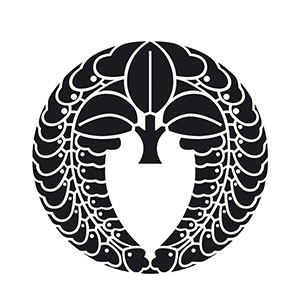Sunpu Domain (1/2)Territories under the direct control of the Shogunate

Naito family crest "Naitofuji"
- Article category
- History of the domain
- domain name
- Sunpu Domain (1601-1871)
- Affiliation
- Shizuoka Prefecture
- Related castles

Sunpu Castle
- related castles
The Sunpu domain was established when Nobunari Naito, a vassal of the Tokugawa clan, entered Sunpu Castle.
However, when Tokugawa Ieyasu retired and moved to Sunpu Castle, the Sunpu domain ceased to exist.
After many twists and turns, the Sunpu domain came to be directly controlled by the castle lords from generation to generation.
This time, let's unravel the history of the Sunpu domain, including the method of governing the territory under its direct control.
Tokugawa Ieyasu's tenth son served as the lord of the castle, but it soon ceased to exist.
The Sunpu domain was established in 1601 when Nobunari Naito, a vassal of the Tokugawa clan, entered the domain with 40,000 koku.
However, when Tokugawa Ieyasu, who retired after passing over the position of second shogun to Hidetada Tokugawa, entered Sunpu Castle, the Sunpu domain came under the control of the shogunate and was temporarily abolished.
In 1609, the Sunpu domain was revived when Tokugawa Ieyasu's tenth son, Yorinobu, was given 500,000 koku of land in Suruga, Totomi provinces, and Higashi Mikawa and entered Sunpu Castle.
However, since Tokugawa Yorinobu was only 7 years old at the time, Tokugawa Ieyasu continued to be in charge of political affairs.
In 1619, Yorinobu was transferred to the Wakayama domain of Kii Province with 555,000 koku, and the Kii Tokugawa domain was established, but the Sunpu domain was abolished again to replace it.
Later, in 1625, Tokugawa Tadanaga, the younger brother of the third shogun, Tokugawa Iemitsu, was sealed off in Suruga, Totomi, Kai, etc. with 550,000 koku, and the Sunpu domain was established again.
It was a hectic period, with the domain being abolished and revived twice in 24 years.
However, Tokugawa Tadanaga and his older brother Tokugawa Iemitsu fought for the title of shogun and lost, so the relationship between the two brothers was very bad, and their rough behavior became a problem.
Finally, in the 7th year of Kanei (1630) (according to one theory, 8th year of Kanei), he became a captive in the Ueno-Takasaki domain, and in 1632, he became a kaieki.
The following year, in 1633, Tokugawa Tadanaga committed suicide, and the Sunpu domain was abolished for the third time.
From then on, the Sunpu domain was never revived, and until the Meiji era it became a territory under direct control, with hatamoto acting as castle lords.
Mechanism of the reign of the Sunpu domain
After the Sunpu domain came under the direct control of the shogunate, it established the castle lord of Sunpu and served as a base for this area, which was a key strategic point along the Tokaido.
Sunpu Castle was ruled by the roju, and there are records that he was stationed in Sunpu and was responsible for overseeing the castle's guard, guarding the Otemon gate, and serving as Kunosandai worshiper.
The same castle lord is the ``Osaka Castle lord,'' but while the Osaka castle lord was appointed by the Fudai daimyo, the Sunpu castle lord was appointed by the hatamoto with less than 10,000 koku.
By the way, Sunpu castle lord had the highest status under the Roju rule, was given 2,000 koku of goyakuchi, and had a ganmagazume seat (a seat in the antechamber when attending to the shogun). is.
In the second year of Keian (1649), Sunpu Standard was established as a deputy castle lord to support Sunpu Castle.
Sunpu's standard guard was in charge of guarding the Yotsukomon gate, and was ruled by the Roju, similar to Sunpu Castle.
It is said that the price was 1,000 koku for the official high school, 1,500 bales for the official fee, and Fuyo was packed.
In addition, Sunpu Zaiban was established as a military force to reinforce Sunpu Castle Dai and Sunpu Standard until 1790.
Those appointed as Sunpu Zaiban were shoinban under the direct control of the shogun, and they had a great influence on the economy of Sunpu Castle, not only through their military power but also through the exchange of combined rice into cash on the market.
In addition, there were other positions to assist the Sunpu castle lord, such as Sunpu Gincho Head, Sunpu Ginban, Sunpu Arms Magistrate, and Kunozan General Gatekeeper, and the Sunpu Town Magistrate was placed in charge of the general administration of Sunpu.
- related castles

- WriterAYAME(Writer)I am a writer who loves history, focusing on the Edo period. My hobbies are visiting historical sites, temples and shrines, and reading historical novels. If there is a place you are interested in, you can fly anywhere. I'm secretly happy that the number of sword exhibitions has increased recently thanks to the success of Touken Ranbu.



